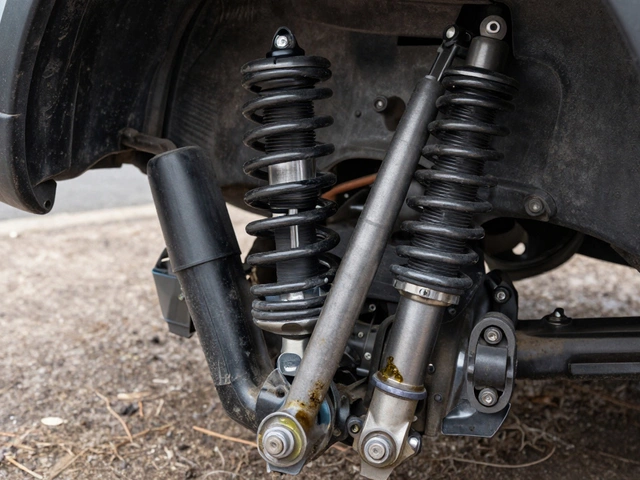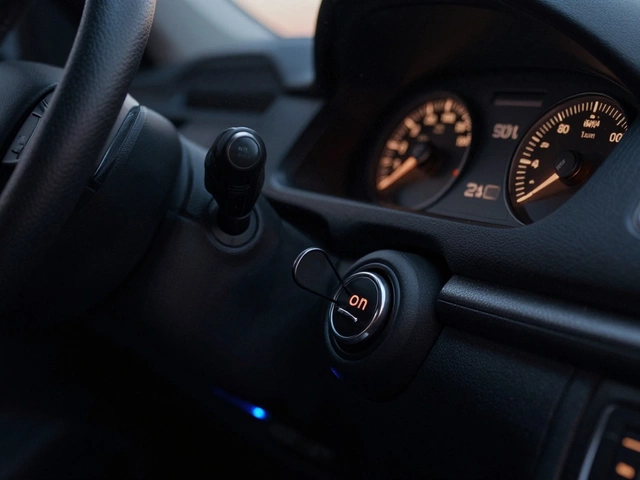Most people hear that you should change your oil every 3,000 miles—but what if your car barely hits that in a year? Maybe you just use your car for errands, or you’ve got a second car that sits more than it drives. The big question is, will your engine be okay if you only change oil once a year?
Here’s the thing: engine oil isn’t just about the mileage. Oil deals with moisture, temperature changes, and time. Even when your car is sitting, air sneaks into the engine and brings in dust and water vapor. These tiny bits start to mess with the oil, making it break down slowly, whether you drive or not. So, a low-mileage car isn’t totally off the hook for oil changes.
- How Oil Breaks Down Without Driving
- What Car Makers Say About Low-Mileage Oil Changes
- Risks of Waiting a Year Between Changes
- Smart Tips for Low-Mileage Drivers
How Oil Breaks Down Without Driving
You might think engine oil only wears out when you're putting miles on the car, but that's just part of the story. Oil slowly degrades even when your ride is parked most of the time. Air gets into the engine through small gaps, and this brings along moisture and oxygen. That’s when rust and corrosion can sneak up on the metal parts inside.
When oil sits, it also mixes with condensation—yup, water. Temperature changes from day to night make this even worse in garages or on the street. The oil can't get hot enough to burn off the water if you’re not driving long enough, so this water stays in your oil, slowly breaking it down and making it less able to protect your engine.
Add in tiny fuel or exhaust particles sneaking past the piston rings, and you end up with oil that slowly gets contaminated without ever leaving your driveway. Over time, this means less protection and more risk when you finally do start the engine.
- Condensation: Forms moisture inside your engine, especially in temperature swings
- Oxidation: Oxygen from air breaks oil down even at a standstill
- Contamination: Dust, fuel, and exhaust can still creep into oil while parked
According to a study by Mobil, engine oil can start showing chemical changes after just six months of sitting, especially in humid environments. Synthetic oils last longer, but even they aren’t invincible when exposed to air and moisture over time.
| Factor | How it affects parked cars |
|---|---|
| Moisture/Condensation | Leads to sludge and rust in the engine |
| Oxygen | Causes oil breakdown, losing its protective abilities |
| Temperature Swings | Boosts moisture buildup |
| Dust & Exhaust residue | Makes oil dirty even without mileage |
The bottom line? Even if your car spends most of its time in the garage, the engine oil still ages—it doesn’t get a free pass just because you skipped a few road trips.
What Car Makers Say About Low-Mileage Oil Changes
Whether you drive 2,000 or 20,000 miles a year, car manufacturers usually have a clear answer about oil change timing. You’ll spot something called a “time interval” in the owner’s manual. For most brands, it’s either every 6 months or 1 year—whichever comes first—even if your engine oil looks clean or you’ve only driven a little.
Let’s look at what some of the big names say:
| Brand | Oil Change Interval (miles) | Time Limit |
|---|---|---|
| Toyota | 10,000 (synthetic) | 12 months |
| Honda | 7,500–10,000 (synthetic) | 12 months |
| Ford | 7,500 (synthetic) | 6 months |
| Chevrolet | 7,500 (synthetic) | 12 months |
| BMW | 10,000 or sensor-based | 12 months |
Here’s why the time part matters: even if you barely drive, things like moisture and condensation build up in your engine and oil can lose its protective punch. That’s why skipping a year—even on a ‘garage queen’—isn’t what the factory suggests.
- If you do a lot of short trips or don’t let your engine fully warm up often, oil changes can matter even more. Short drives make it easy for water to build up.
- If your car is still under warranty, following the “whichever comes first” rule is a must—otherwise, the company can deny future engine claims.
Most newer cars have reminder systems that track time and miles, so you don’t have to guess. If you’re unsure, check your manual or call your dealership. A quick call could save you a headache later.

Risks of Waiting a Year Between Changes
Taking a full year between oil changes might sound good if you’re not driving much, but you’re actually rolling the dice on your engine’s health. Even cars that sit parked most of the time face hidden problems with their oil, and these issues can add up faster than most people think.
The main problem has to do with how engine oil reacts over time. Oil loses its protective qualities, gets contaminated by dust, moisture, and acid, and eventually turns into more of a threat than a shield. This process starts the moment oil enters your engine, not just when you’re piling up miles.
Check out these facts and risks that come with stretching oil changes to once a year:
- Moisture builds up — Short trips don't let the engine get hot enough to burn off water vapor, so moisture stays in the oil and leads to sludge and acid. That stuff eats away at metal parts from the inside.
- Oil additives break down — The detergents and chemicals in oil that fight grime and stop corrosion fade out over time, even if the car sits. Once those are gone, your engine’s basically swimming without a lifeguard.
- Risk of sludge — Fresh oil is smooth and clean, but old oil thickens and can become sludgy. Sludge blocks oil flow and leads to expensive repairs or even a seized engine.
- Warranty concerns — Lots of car warranties require following the time schedule for oil changes, not just mileage. Skip the yearly change and you might risk voiding coverage on engine issues.
Here’s a quick look at what can happen to engine oil over time, even with very little driving:
| Time (Months) | Main Oil Changes | Possible Risks to Engine |
|---|---|---|
| 0–3 | Oil stays fresh, additives still effective | Protection at its best |
| 4–8 | Additives drop off, moisture increases | Early sludge, minor corrosion risk |
| 9–12 | Contaminants build, oil loses viscosity | Sludge, more wear, voided warranties |
Skipping oil changes for a whole year might save a few bucks now, but if engine repairs show up later, you’re looking at costs way past what an oil change would run you. Plus, breakdowns always seem to happen at the worst time—like when you’re picking up the dog from the vet (trust me, Max would never let me hear the end of it).
Smart Tips for Low-Mileage Drivers
People who don't clock up lots of miles still need a plan for keeping their cars healthy. If that sounds like you, here’s what the pros and real-world drivers actually do.
- Engine oil expiration isn’t a myth. Even if oil looks clean on the dipstick, the additives that protect your engine slowly wear out after six to twelve months. Fresh oil has chemicals to fight rust and keep gunk from building up. When those wear down, it’s like leaving your engine unguarded.
- Write down the last time you changed your oil, not just your mileage. It’s way too easy to forget when you only drive a little.
- If your car sits for weeks at a time, try to take it for a 20–30 minute highway run every couple of weeks. Short trips just don’t get the oil hot enough to burn off water and fuel that sneak in. Longer drives let your engine reach peak temperature, drying things out inside so your oil stays cleaner.
- Use synthetic oil if your car takes it. Synthetics hold up better over time and handle temperature swings more gracefully than conventional oils. They also resist gunky buildup from sitting.
- Consider changing your oil filter with every oil change, not every other one. Filters can get a little soggy on cars that don’t drive much, letting sludge form.
- Double-check your owner's manual for the time-based service schedule. Most manuals say to swap oil every 12 months if you haven’t hit the mileage mark yet. Some newer cars have oil-life monitors, but those often rely more on miles than months.
If you keep these basics in mind, you won’t waste cash on unnecessary changes, but you also won’t roll the dice on engine wear. Think of your low-mileage oil change as insurance, not just routine maintenance.








